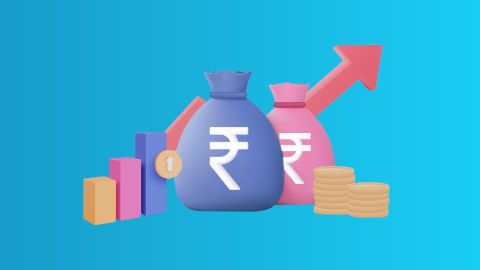Importance of CNC machine
CNC machines hold immense significance in today’s industrial environment:
- Enhanced precision: They produce intricate and exact parts that would be difficult to achieve manually.
- Increased efficiency: CNC machines can operate continuously with minimal supervision, leading to higher productivity.
- Repeatable accuracy: Every item produced is a perfect replica of the original design, ensuring consistent quality.
- Lower labour dependency: Automation reduces the need for manual intervention, saving time and costs.
- Capability to handle complex designs: CNC machines can execute designs that traditional machinery would find challenging.
- Boosts innovation: Industries like aerospace, automotive, and healthcare have achieved significant advances through CNC technology.
For small-scale manufacturers who want to enhance precision and productivity, exploring funding through a micro loan can be a strategic business move. Check your business loan eligibility to see which funding options best suit your business goals.
How does a CNC machine work?
The CNC machining process typically follows four main steps:
- Creating a CAD model:
A designer uses Computer-Aided Design (CAD) software to develop a 2D or 3D digital model of the part to be produced. This model defines all dimensions, shapes, and geometric features of the component.
- Generating the CAM program (G-code):
The CAD file is imported into Computer-Aided Manufacturing (CAM) software, which interprets the design geometry and generates the machine instructions—G-code and M-code—that the CNC system can execute.
- G-code (Geometric code): Governs the tool’s movements, specifying position, speed, and direction along the machine’s axes.
- M-code (Miscellaneous code): Manages auxiliary functions such as spindle control, coolant flow, and automatic tool changes.
- Configuring the machine:
Before machining begins, the operator sets up the CNC machine by securing the raw material (workpiece) on the machine table and loading the appropriate cutting tools into the spindle or tool changer.
- Executing the operation:
The CNC control unit reads the G-code instructions and directs the machine’s motors and drives to perform the programmed actions. The machine then removes material from the workpiece with high precision, shaping it into the final part.
What is a CNC machine used for?
CNC machines are used across many industries for different applications:
- Aerospace: Manufacturing engine components, structural parts, and critical assemblies.
- Automotive: Producing gearboxes, engine blocks, and custom parts.
- Healthcare: Crafting prosthetics, surgical tools, and implants.
- Electronics: Making parts for smartphones, laptops, and circuit boards.
- Metalworking: Cutting, drilling, welding, and shaping metal parts.
- Woodworking: Carving, cutting, and engraving furniture or decorative elements.
Their ability to produce complex parts reliably and at scale makes CNC machines indispensable to modern manufacturing. Startups venturing into these manufacturing sectors can explore startup business loans to support CNC machinery acquisition and setup.
Working principle of CNC machine
The process of CNC machining relies on several key components working together seamlessly. It begins with the input of the part program into the Machine Control Unit (MCU). Within the MCU, all data processing takes place, where the system interprets the programmed instructions and generates precise motion commands. These commands are then sent to the drive system.
The drive system responds by controlling the movement and speed of the machine tool according to the instructions. At the same time, a feedback system continuously monitors the tool’s position and velocity, sending real-time feedback signals back to the MCU. The MCU compares these feedback signals with the original programmed values, identifies any discrepancies, and makes immediate corrections to maintain accuracy.
To support smooth human-machine interaction, a display unit provides a live visual of the active commands, programs, and operational data, helping operators oversee and manage the CNC system efficiently. For growing SMEs looking to scale operations with high-tech tools, an msme loan can bridge the financing gap effectively.
Components of a CNC machine
The main components of a CNC (Computer Numerical Control) machine work together to deliver precise, automated machining operations. These key elements include:
- Input devices:
Input devices are used to transfer the part program into the CNC machine. Common types include punch tape readers, magnetic tape readers, and computers connected through RS-232-C communication ports. These devices send machining instructions to the control unit for further processing.
- Machine Control Unit (MCU):
The MCU serves as the brain of the CNC system. It reads and decodes the program instructions, performs interpolation (linear, circular, or helical) to calculate the required tool movements, and sends corresponding commands to the drive system. It also manages auxiliary functions such as spindle control, coolant regulation, and tool changes. Additionally, it continuously receives feedback on position and speed to ensure precision throughout the operation.
- Machine tool:
This component includes the slide table and spindle, which control the movement and operation of the cutting tool. The table moves along the X and Y axes, while the spindle provides motion along the Z-axis. Together, these components enable accurate cutting and shaping of the workpiece.
- Drive system:
The drive system consists of amplifier circuits, drive motors, and ball lead screws. The MCU sends control signals to the amplifiers, which boost them and activate the drive motors. The motors rotate the lead screws to precisely position the machine table and spindle according to the programmed commands.
- Feedback system:
The feedback system comprises sensors and transducers that monitor the position and speed of the cutting tool in real time. This data is sent back to the MCU, which compares it with the programmed values. If discrepancies are detected, the MCU issues corrective signals to maintain machining accuracy.
- Display unit:
The display unit, typically a monitor, provides a real-time visual interface for the operator. It displays CNC programs, tool paths, machine commands, and system status information, allowing for effective monitoring, troubleshooting, and control of machine operations.
Common CNC Machining Processes
The CNC machining workflow can be applied to several subtractive manufacturing processes, where material is precisely removed to create the desired shape. These include:
The CNC machining workflow can be applied to several subtractive manufacturing processes, where material is precisely removed to create the desired shape. These include:
- Milling: A rotating cutting tool moves relative to a stationary workpiece to remove material and produce slots, holes, contours, and complex 3D shapes.
- Turning: The workpiece rotates while a stationary cutting tool removes material to form cylindrical components such as shafts, pins, and bushings.
- Drilling: A rotating drill bit is fed into the workpiece to create accurate, round holes.
- Routing: Similar to milling but typically used for softer materials such as wood, plastic, or composites.
- Electrical Discharge Machining (EDM): Material is eroded using controlled electrical discharges (sparks), making it ideal for hard metals and intricate shapes.
- Laser Cutting: A high-powered, focused laser beam melts or vaporizes material to achieve precise cuts, especially for thin metal sheets with minimal thermal distortion.
Types of CNC machines
There are several types of CNC (Computer Numerical Control) machines, each designed to meet specific industrial and manufacturing requirements. Here’s a detailed look at the main categories:
CNC mills
CNC milling machines are highly versatile tools used to cut and shape solid materials like metal, plastic, and wood. They operate by moving a rotating cutting tool along multiple axes, allowing for the creation of complex parts and precision surfaces. CNC mills are commonly used in industries like aerospace, automotive, and prototyping, where fine detailing and accurate dimensions are essential.
CNC lathes
CNC lathes are machines that rotate a workpiece against a stationary cutting tool. This setup is ideal for creating symmetrical objects like cylinders, cones, and discs. CNC lathes are widely used in manufacturing industries to produce machine components, shafts, and fittings with extremely tight tolerances. The high-speed rotation and precise tool positioning ensure smooth finishes and repeatable accuracy.
Turning centres
Turning centres are advanced versions of CNC lathes, offering enhanced functionalities such as milling, drilling, and tapping along with traditional turning operations. They typically feature multiple axes and live tooling capabilities, allowing for more complex machining tasks in a single setup. Industries that require high-volume production with varied operations, such as automotive and heavy machinery manufacturing, often rely on turning centres.
CNC grinders
CNC grinding machines are used for finishing operations that require fine surface finishes and exact dimensions. They employ an abrasive wheel to remove small amounts of material from hard surfaces such as metals or ceramics. CNC grinders are essential in industries like aerospace, medical device manufacturing, and precision engineering where component accuracy and surface smoothness are critical.
CNC drilling machines
CNC drilling machines are designed to create holes in a workpiece with speed and precision. They automate the process of aligning, positioning, and drilling, which improves efficiency and reduces the risk of manual errors. These machines are widely used in industries like construction, manufacturing, and electronics for tasks such as drilling circuit boards, metal sheets, and wooden panels.
CNC boring machines
CNC boring machines are specialised for enlarging and finishing pre-existing holes with high precision. Unlike simple drilling, boring improves the accuracy, roundness, and surface finish of holes, making them suitable for critical applications such as engine blocks, aerospace components, and hydraulic cylinders. CNC boring machines help ensure tight tolerances and alignment across complex assemblies.
Electrical discharge machines (EDM)
Electrical Discharge Machines (EDM) use controlled electrical sparks to erode and shape electrically conductive materials. This non-contact method allows EDM machines to cut intricate and hard-to-machine components, often made from materials like titanium, hardened steel, or carbide. EDM is commonly used in tool and die making, mould production, and aerospace applications where traditional cutting tools may not be effective.
Laser cutting machines
CNC laser cutting machines use focused, high-intensity laser beams to cut through a variety of materials, including metals, plastics, wood, and fabrics. They are known for their speed, precision, and ability to produce intricate shapes with minimal material wastage. Laser cutting is extensively used in industries such as automotive, electronics, signage, and furniture manufacturing.
Manufacturers handling high-value or custom components may opt for a secured business loan to fund CNC machines with advanced capabilities and higher capital requirements.
Functions of CNC machine
The fundamental functions performed by a CNC machine include:
- Controlled movement of cutting tools across multiple axes.
- Automatic regulation of feed rates and cutting speeds.
- Real-time adjustment of tool positions to match design specifications.
- Accurate tool changes to enable multi-stage machining processes.
- Execution of repetitive, large-scale production without manual errors.
These functions ensure that CNC machines deliver precision manufacturing efficiently and reliably.
Advantages and Disadvantages of CNC Machines
Advantages
|
Disadvantages
|
High Precision and Repeatability: Produces components with exceptional accuracy and ensures consistent replication of designs.
|
High Initial Investment: CNC machines involve significant upfront costs, which can be a challenge for small or new businesses.
|
Increased Production Efficiency: Operates continuously with minimal supervision, resulting in higher productivity and reduced cycle times.
|
Programming Expertise Required: Skilled programmers and operators are needed to create CAD models and G-code instructions.
|
Ability to Produce Complex Geometries: Capable of manufacturing intricate and detailed shapes that would be difficult or impossible to make manually.
|
Material Waste: As a subtractive manufacturing process, CNC machining can produce considerable waste, particularly with costly materials.
|
Versatility: Suitable for a wide variety of materials and capable of performing multiple operations in a single setup.
|
High Maintenance Costs: Advanced machinery and software demand specialized and regular maintenance, which can be expensive.
|
Enhanced Safety: Minimizes operator involvement in hazardous tasks, reducing the risk of workplace accidents.
|
Risk of Programming Errors: Mistakes in programming can result in a series of defective parts before the issue is detected.
|
Reduced Labor Costs: A single operator can manage multiple machines, significantly lowering labor expenses.
|
Dependence on Software and Power Supply: The entire process relies heavily on stable power and reliable software performance.
|
Data Tracking and Monitoring: Modern CNC systems support real-time performance tracking, diagnostics, and remote monitoring.
|
Risk of Skill Obsolescence: Automation reduces the demand for traditional manual machining skills over time.
|
Quick Prototyping: Advanced software tools enable virtual prototyping, saving time and resources in product development.
|
Limited Design Flexibility: Extremely thin walls, sharp internal corners, or other complex features may be difficult to machine.
|
Faster Turnaround: Shorter production times allow manufacturers to quickly meet changing market demands.
|
High Cost for Small Batch Production: The setup and programming effort can make low-volume production less cost-effective.
|
Price range of CNC machine
When planning to invest in precision manufacturing equipment, understanding the price of CNC machine options is essential. CNC machine prices vary depending on the type, complexity, and capabilities of the machine. Here is an indicative price range for various types of CNC machines:
Actual pricing may vary based on machine specifications, brand, features, and customisations.
Buying guide for CNC machine
When selecting a CNC machine, it’s important to evaluate several key factors to ensure it aligns with your operational needs and goals:
- Materials:
Determine the types of materials you’ll be working with, as different CNC machines are designed for specific applications — for example, routers for wood, mills for hard metals, and plasma cutters for conductive materials.
- Budget:
CNC machine prices can range from around Rs. 30,000 for small hobby kits to over Rs. 10,00,000 for advanced industrial systems. If the upfront investment is significant, consider financing the purchase through a machinery loan to manage costs more effectively.
- Project Complexity:
The complexity of your workpieces will influence the number of machine axes you need.
- 3-axis machines are suitable for basic cutting and 2.5D operations.
- 4- and 5-axis machines are ideal for producing complex, multi-sided components and offer greater flexibility.
- Workspace:
Assess the available space in your workshop and the required working area. For limited setups, a compact or desktop CNC model may be more practical.
- Skill Level:
Entry-level CNC machines typically include user-friendly software and are easier to operate, while advanced machines may require a solid understanding of programming and machining principles.
- Software and Control System:
The control unit determines how you interact with the machine, often using G-code. Some models feature proprietary controllers, whereas others rely on open-source or standard systems such as GRBL.
CNC machine financing options
Buying a CNC machine often involves a significant upfront investment, but several financing solutions are available to make the process more accessible. Options like Industrial Equipment Finance enable businesses to acquire essential machinery without straining their working capital. By opting for structured EMIs, companies can spread the cost over manageable tenures and avoid heavy one-time payments.
Industrial Equipment Finance offers customised plans that come with flexible repayment options, minimal documentation requirements, and competitive interest rates. With the right financing partner, scaling your manufacturing operations with a new CNC machine becomes a smooth and sustainable decision.
With the right financing partner, scaling your manufacturing operations with a new CNC machine becomes a smooth and sustainable decision. Your next CNC machine upgrade might already be pre-approved.
Conclusion
CNC machines have become vital to modern manufacturing, offering unmatched precision, speed, and efficiency across sectors such as aerospace, automotive, healthcare, and electronics. They play a key role in enhancing innovation, product quality, and operational productivity.
While the cost of acquiring a CNC machine can be substantial, financial solutions like a business loan can help you invest in high-quality equipment without disrupting your cash flow. By securing the right financing, you can confidently upgrade your production capabilities and position your business for long-term success. Check your pre-approved business loan offer now.
Helpful resources and tips for business loan borrowers






